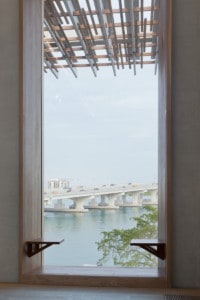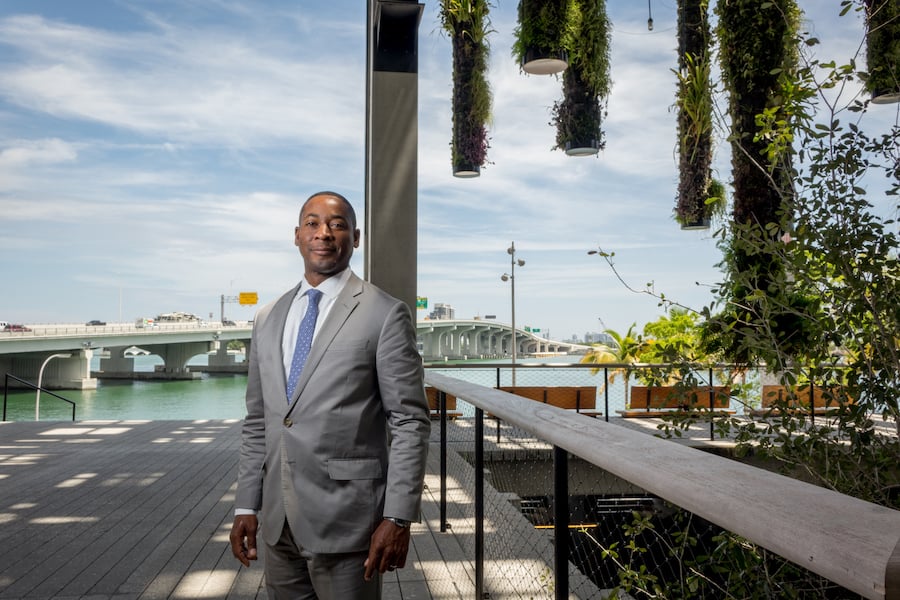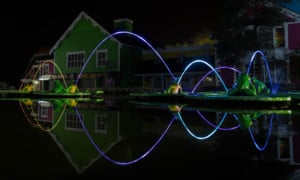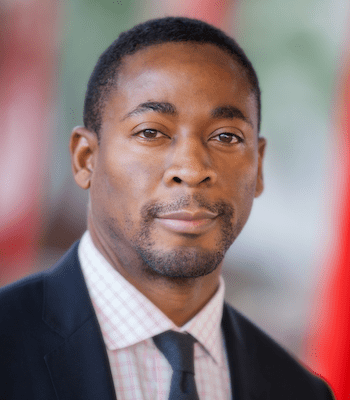
Franklin Sirmans, Director of Pérez Art Museum Miami (PAMM), spoke to blooloop about his career to date, making the most of pandemic closures, and taking the organization forward in 2021.
Sirmans is an award-winning writer, curator, educator, and art critic and has been the Director of the Jorge M. Pérez Art Museum of Miami-Dade County since 2015. A native New Yorker, he studied Art History and English at Wesleyan University. Sirmans has taught at Maryland Institute College of Art and Princeton University. He has also written for numerous publications, including Art in America, Essence Magazine, and The New York Times.
He launched his curatorial career at the Dia Art Foundation, where he curated annual exhibitions across the U.S. and internationally.
Before he joined PAMM, Sirmans also served as Curator of Modern & Contemporary Art and Department Head & Curator of Contemporary Art, at The Menil Collection in Houston, and the Los Angeles County Museum of Art (LACMA), respectively. His work for The Menil Collection, specifically a travelling exhibition entitled “NeoHooDoo: Art for a Forgotten Faith,” introduced him to PAMM.
In five years at PAMM, Franklin Sirmans has made a significant mark on the institution. He’s secured large donations and built new and expanded programs that are reflective, and supportive of the Miami community’s vibrant diversity.
Pérez Art Museum Miami
PAMM, previously Miami Art Museum (MAM), began collecting art in the mid-1990s. The museum houses modern and contemporary art from the Americas, Western Europe and Africa. Throughout the past decade, the organization has committed to focusing on artwork by Caribbean, Latinx, and African American artists. Today, PAMM has one of the largest collections of contemporary Cuban art in the United States.
In 2010, MAM broke ground on a new $220m building, designed by renowned Swiss architects Herzog & de Meuron. The Museum Park-located facility necessitated partnership with the city and Miami-Dade County, in addition to private gifts and endowments to fund, leading to its official name change upon opening in 2013.
The architects found inspiration for their critically acclaimed design in nearby ‘Stiltsville’. This is a collection of houses off Key Biscayne built on stilts to protect from coastal flooding.
The 200,000 square-foot building and the award-winning landscape architecture which surrounds it present a model for innovative and sustainable museum design, complete with flexible gallery, library, classroom, retail and restaurant spaces.
Indoor and outdoor spaces transition artfully through floor-to-ceiling windows, shaded verandas, and hanging gardens comprised of hurricane-and-heat-tolerant species. A massive stair brings visitors from museum to waterfront.
PAMM’s mission
Also home to the Phillip and Patricia Frost Museum of Science, Museum Park spans 20-acres and is flanked by the Adrienne Arsht Center for the Performing Arts and American Airlines Arena. The rapid-transit accessible location quickly became a cultural destination for the downtown area.
In its first year, PAMM had 300,000 visitors—nearly six times MAM’s visits the previous year. Part of that success in engaging the community is PAMM’s mission to spotlight diversity in modern and contemporary artists and create programs that “seek to educate and ensure that all people can participate in a conversation that shares art at its center.”
Franklin Sirmans finds himself drawn by the growth and evolution of the city and museum alike. “I grew up in New York where you can’t physically change the [urban] environment the way that you can in a place like this,” he says. “Here, there is a strong sense of opportunity and of change in the moment, which is also reflected in the mentality.”

In a curatorial sense, Sirmans says that the museum’s collection is still youthful and malleable. Despite celebrating 36 years in 2020, the institution functioned as a centre for fine arts for its first decade. The first acquisitions began in 1994.
“Because of this history, [PAMM] is still kind of young, and we can really define the museum via our current collecting practices.”
Sirmans finds the work enthralling and loves working in a space which functions as a physical and metaphorical bridge between cultures.
Exhibitions that stimulate discussion
On display through until June 2021, Allied with Power: African and African Diaspora Art from the Jorge M. Pérez Collection is a complement to an exhibition at a private gallery. The counterpart show, WITNESS: Afro Perspectives from the Jorge M. Pérez Collection is at El Espacio 23, just northwest of downtown Miami.
WITNESS features artists primarily from the African continent, whereas Allied with Power, as Sirmans says, “allows for us to think about the diaspora through the lens of Miami and of our institution, which means including more works by Afro Latino artists, [in alignment with] the character of Jorge’s collection.”
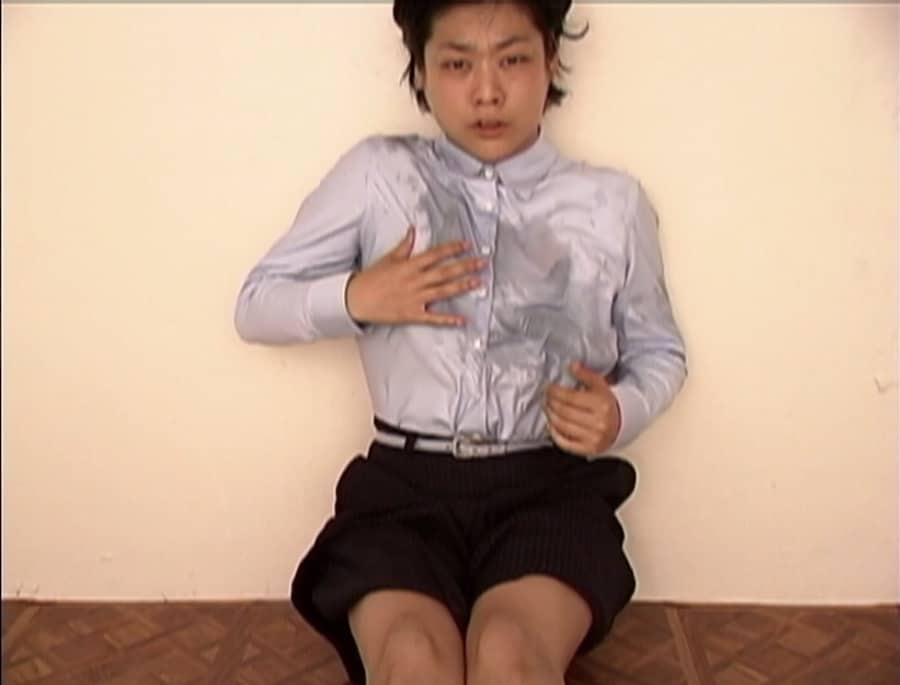
Another exhibition called MY BODY, MY RULES is up through September 2021. It focuses exclusively on the work of 23 women artists from diverse backgrounds and across mediums to address contemporary issues of race, gender, stereotypes, violence, politics and resilience in the context of the female body.
The works range from the 1960s to today, from Louise Bourgeoise to Hayv Kahraman, and from video to sculpture. All prompt discussion about equality by challenging pervasive social narratives.
With these two new shows, PAMM has entered a larger and quite topical conversation, predominantly with works from their permanent collection.
“I think that’s been one of the biggest accomplishments of the last few years as we’ve collected a lot of great pieces,” says Sirmans. “Now, it’s time to provide a context for [the artwork] to speak directly to the present.”
Franklin Sirmans on adapting to the pandemic
Allied with Power was originally intended to be up late April through until late July 2020. However, the museum was closed in accordance with local COVID-19 related guidelines from 16 March to 5 November 2020. When PAMM reopened, it was on a self-dictated limited basis: four days a week at 50 percent max capacity.
Franklin Sirmans is currently splitting his time between working from home and coming into PAMM for meetings and gallery visits. Now, he says he is looking forward to seeing more work in person. Eight months of contemplating and discussing artworks and images only in digital form, “has been hard—like everybody else, you see and learn so much through Instagram.”
In some cases, the museum has even made curatorial decisions using the platform.
PAMM has been employing time-ticketing and requiring visitors to wear masks in addition to maintaining healthy social distances.
During the time when the museum was closed, museum staff—curators, educators, designers, and interns—worked steadily on reopening plans. Working diligently together, they developed a singular navigational strategy and signage to support it based on a well-defined curatorial narrative.
Sirmans attributes the successful reopening to the excellence of his personnel and their teamwork. He also says that allowing the time to find the best possible ways forward is key:
“You have to figure out how to do more with less. In that regard, our staff has really risen to the challenge. Not without some pain along the way, but I think we’re doing a good job.”
Changes in revenue
The institution normally operates on a USD$16m annual budget, expected to be reduced by 20 percent. Pérez Art Museum Miami is a publicly and privately funded institution, which is typical of a mid-sized American art museum.
About a quarter of the Museum’s budget originates from public sources, the rest is from board, contributed and earned revenue. Public support for PAMM comes from the Miami-Dade Mayor and Board of Commissioners, the Department of Cultural Affairs, and the Cultural Affairs Council on the county level.
On the local level, support comes from the City of Miami and OMNI Community Redevelopment Agency. On the state level, it comes from the Florida Department of State, its Division of Cultural Affairs, and also the state’s Council on Arts and Culture.
Prior to the pandemic, earned revenue began with ticket sales, which directly fueled parking, retail, and restaurant sales. To lose ticket sales, meant losing the other streams as well, but digital sales are picking up. The museum’s online shop features PAMM-exclusive and Miami-specific gifts, as well as general art merchandise. Everything from clever T-shirts to high-end objet d’art for the home.
Digital engagement at PAMM
The museum recently hired a Director of Digital Engagement. And PAMM-staff have continued to build their online presence during the shutdown, including a robust YouTube channel
“We’ve had to have this incredible digital ramp-up out of necessity and we are not going to let it go,” says Sirmans. “We’re going to keep on putting a lot of resources and energy into that space.”
Many of the virtual events have been free to the public. However, a select few have catered to those willing to pay. Patrons get to (virtually) sit down with an artist in a discussion group. While Sirmans says “it’s hard to call something like that intimate,” it is quite different from an open forum.
Since reopening, museum administrators have turned their attention to the unique outdoor spaces in their purview:
“We’ve spent more time and energy thinking about the interior space in the last few years. But that is now going to change. We have an outdoor restaurant and sculpture garden right on the bay.”
Working with a diverse local audience
Bringing PAMM’s “Inside/Out” program into the park is certainly also top of mind. Inside/Out is a community program funded by the Miami-based John S. and James L. Knight Foundation (which also contributed USD$500k to establish the Ambassador of African American Art acquisitions affiliate program in 2012). It last ran over three months in the summer of 2017.

The program brought printed reproductions of PAMM-owned artworks into Miami-Dade’s neighbourhoods. Next time, the program won’t have to travel as far; the adjacent neighbourhood of Overtown, a historically black enclave, is first on Franklin Sirmans’ list.
The city, and surrounding metro area, is the twelfth-largest urban economy in the US. In addition to this, it is a huge draw for international tourism. Miami is also a melting pot of cultures, functioning as a bridge between the American South, the Caribbean and Latin America. The population is diverse, with approximately 70 percent of residents of Latinx, and 19 percent of Afro-Caribbean American descent.
Amplifying the voices of African, Caribbean, and Latinx artists
Culturally, the area is the perfect home for the museum. The Pérez Art Museum plays a significant role in amplifying the voices of African, Caribbean, and Latinx artists. This helps to distinguish it from other institutions. In 2019, PAMM was gifted USD $1m to support its newly formed Caribbean Cultural Institute by the Andrew W. Mellon Foundation.
“I think we were doing a great job of just being a museum for international, modern, and contemporary art. However, we strive to be the best at presenting the work of Latin America and the Caribbean, and looking toward the African diaspora,” says Sirmans. “There are few places where you can make that your mandate.”

Franklin Sirmans believes that the PAMM team’s unique voices are a large part of what enables it to achieve excellence in those spaces. This platform has also allowed the museum to build progressively with diversity equity, accessibility, and inclusion in mind.
“There is a space for us to be leaders in that conversation, without a doubt,” says Sirmans. “Our relationship with population and demographics is quite different than other places. And so, there’s a chance that we can do something, as a museum, that is part of a bigger humanist project.”
PAMM in the community
Pérez Art Museum is well on its way to being part of a bigger humanist project. The PAMM Student Pass initiative launched in 2018, granting free entrance to public school students Pre-K through twelfth-grade.
The staff have assembled art education kits for the school system. They also recently created Art Kits that were distributed to those in need in the community, alongside relief meals.
“What could be more important than relief meals in communities of need?” asks Sirmans. He believes the institution has already branched out in different and unexpected ways. However, he also thinks that possibilities exist for “so much more.”
Today, the kits are available for free in the museum, and artists are also making work on the premises. This is something they’ve never done before. For now, he says, this is how they want to spend the resources that they have. “I can do this, you can do this, we can do this together,” is part of what the museum wants to communicate now.
Franklin Sirmans looks to the future
Sirmans expects the first six months of 2021—at the very least—to look very much like the second half of 2020. Short-term and long-term planning and preparation are ongoing. But to safeguard the institution for the future means building a bigger endowment. Taking PAMM forward will also require finding ways to engage younger generations.
“I believe that there’s a combination of the traditional museum-going experience with a much more collaborative and community-centred approach,” he says. This would be in concert with an increasingly digitally interactive approach. Integrating more AR and VR experiences into the physical space as well as the museum’s virtual presence.
“Rather than the museum saying, ‘Come to us, we have X,’ we’d ask ‘What is of interest to you? How can we work together to make sure that art is accessible to everybody in this community and can play a role in our civic lives?’”
In his mind, the best thing that art—whether film, music, video, painting sculpture—can do for us is bridge the lines of division that “separate us and don’t allow us to see each other wholly”. And, after these last months, it would seem art is needed more than ever.
Images kind courtesy of PAMM. Top image: East Façade Pérez Art Museum Miami by Daniel Azoulay Photography


